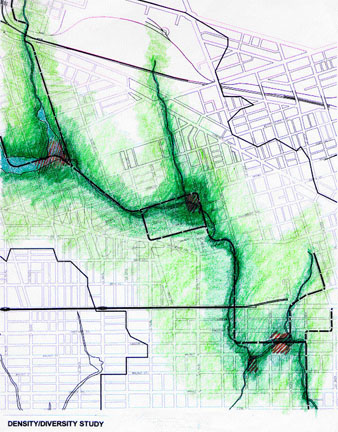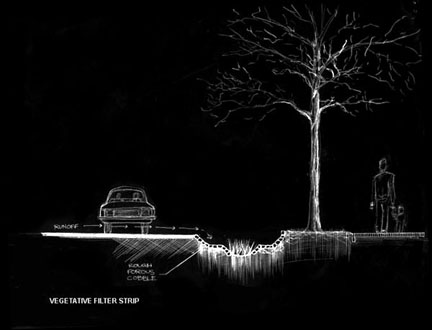Human interaction and activity increase as water volume increases.
Vegetation density and diversity increase as water volume increases.
Water, and therefore people and vegetation "collect" at low spots in the landscape.
Critical Infiltration Areas are identified as places of water accumulation which provide for the infiltration and filtration of storm water runoff in the Mill Creek watershed. These areas serve the community as centers for social and commercial activity, education, and recreation. Vegetative density and diversity peaks in these areas. Wetland ponds will detain and filter storm water runoff, utilizing aeration machines which are powered by the sewer below. Furthermore, filtered water may be utilized as a resource for the community. Vegetative filter strips installed along main roads throughout the watershed slow, filter and infiltrate polluted surface runoff.
Revealing Urban Waters

Density study.

Vegetated roadside filter strip for stormwater infiltration.